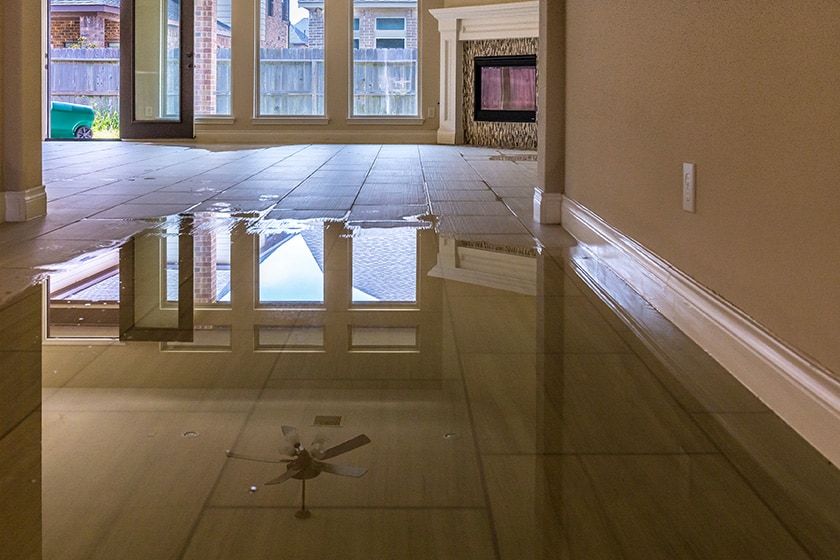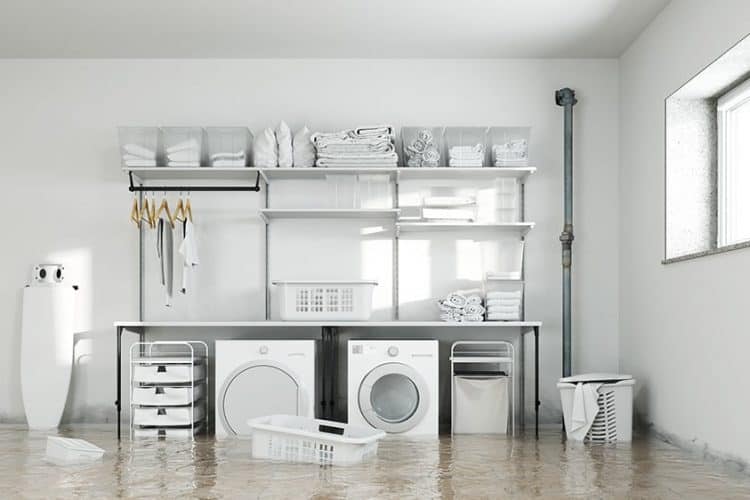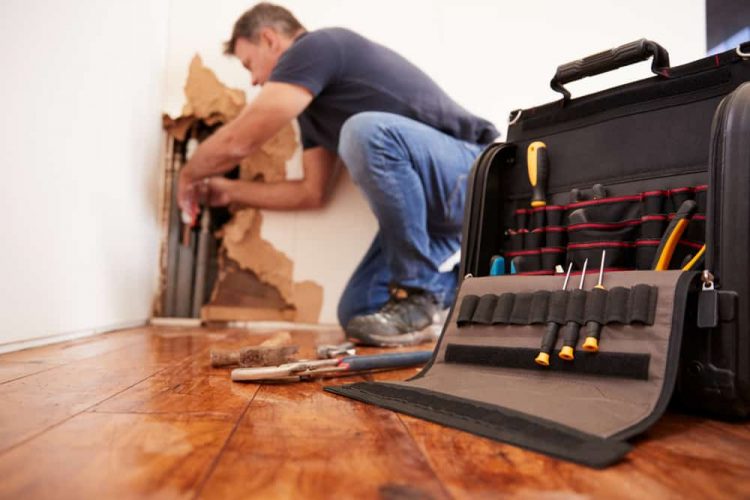
According to Forbes, every year, one in 50 homeowners files an insurance claim for water damage to their home. The average cost of a water damage claim (including freezing) is more than $10,000.
There are three main ways water damage occurs in properties: gradually over time, with a sudden and specific incident, or as a result of a weather event. Regardless of the cause of the water damage situation, it is important to act quickly to contain the damage and prevent mold growth. Mold can start growing within 24-48 hours in areas that are both difficult to see and difficult to reach, so thorough cleanup of water-damaged areas is something that needs to be done as soon as possible.
To determine if you can do this work on your own or if you need to call a professional property damage restoration service, here are some immediate steps to take when you discover water damage in your house.
Safety is your first priority
- Determine the level of water damage you have, and keep all people and animals away from the area. If gas, electricity, or contaminated water may be involved, evacuate everyone from the home until you’ve confirmed it’s safe to be inside.
- For all water damage, always shut off the electricity until you know the extent of the damage. If you cannot do so safely, contact your power company.
- If the water is caused by a leaky or broken pipe or another in-home issue (plumbing, appliances), shut off your water.
- If the damage is extensive, you should consider shutting off the gas.
- Determine which of the three types of water you are dealing with:
- Category 1 – clean water is water from sanitary sources such as a supply pipe leak, an appliance water line, a water heater, or similar circumstances.
- Category 2 – sometimes called gray water – comes from a source such as a dishwasher, plumbing overflow (without sewage or fecal matter), washing machine, or sump pump failure. There is a moderate level of contamination in this type of water.
- Category 3 – sometimes called black water – is highly contaminated and results from sewage backup, flood waters, groundwater, or appliances that contain antifreeze.
- Contact a qualified restoration company first so they can provide an assessment of the water damage. This will help you, the homeowner, decide if you wish to file a claim through your homeowners insurance. If you do choose to file an insurance claim, document and photograph the damage before the clean-up.
- Decide if you can address the water damage issue on your own, or if you need to call a professional water damage mitigation company.
Begin the water removal process
- If you’re proceeding on your own, wear the appropriate personal protective equipment (PPE) for the type of damage and level of contamination. At a minimum, this includes rubber boots, gloves, and safety glasses or goggles. These will protect you against bacterial concerns and are particularly crucial if you’re dealing with plumbing overflow.
- Remove the excess water using buckets, a wet vac, a utility pump, towels, and mops. You can rent a wet vac from a hardware supply store if you don’t have one.
Remove furniture and related items
- Remove furniture, accessories, carpets, and flooring from the water-damaged area as soon as possible to help mitigate further damage. Separate the items you remove into what is salvageable (you can dry, clean, and sanitize) and what needs to be discarded.
- Remove picture frames or anything on the walls as well as ceiling tiles if there is noticeable or possible water damage in the ceiling.
- Remove any wet drywall and baseboards if necessary. The drywall should be discarded, but you may be able to salvage the baseboards if you can dry, clean, and sanitize them.
Dry your home
- If it’s safe to turn your electricity back on, start drying your home using fans, heat, open windows, and a dehumidifier. Only open the windows if the humidity inside the home is higher than the humidity outside your home. If you’re unsure whether the water has impacted electrical outlets, have an electrician or water damage professional take a look.
- Porous materials such as wood, drywall, and ceiling tiles need to be dried as soon as possible to best prevent mold.
Investigate for mold
- Be aware of any mold you see or smell as you’re drying out your home. You may see black spots or brown water damage marks once walls and ceilings start to dry out. The U.S. EPA has more information on mold cleanup.
Contacting 1-800 WATER DAMAGE
According to Chubb insurance, “non-weather-related water losses are the number one source of property damage and 45% of all interior property damage is caused by water, happening more often than fire and burglary,” so it’s a good idea to familiarize yourself with these steps in case a water damage event impacts your home
1-800 WATER DAMAGE provides 24/7 emergency response services for water losses. We will thoroughly assess any water damage on your property to help you understand exactly what you’re dealing with when facing water damage in your home. The assessment helps you decide if you can handle the project on your own, or if professionals are needed to ensure your home is safe from immediate and long-term issues.
When you have a water damage issue in your home, give us a call to book an assessment or for more information on our property restoration services.



